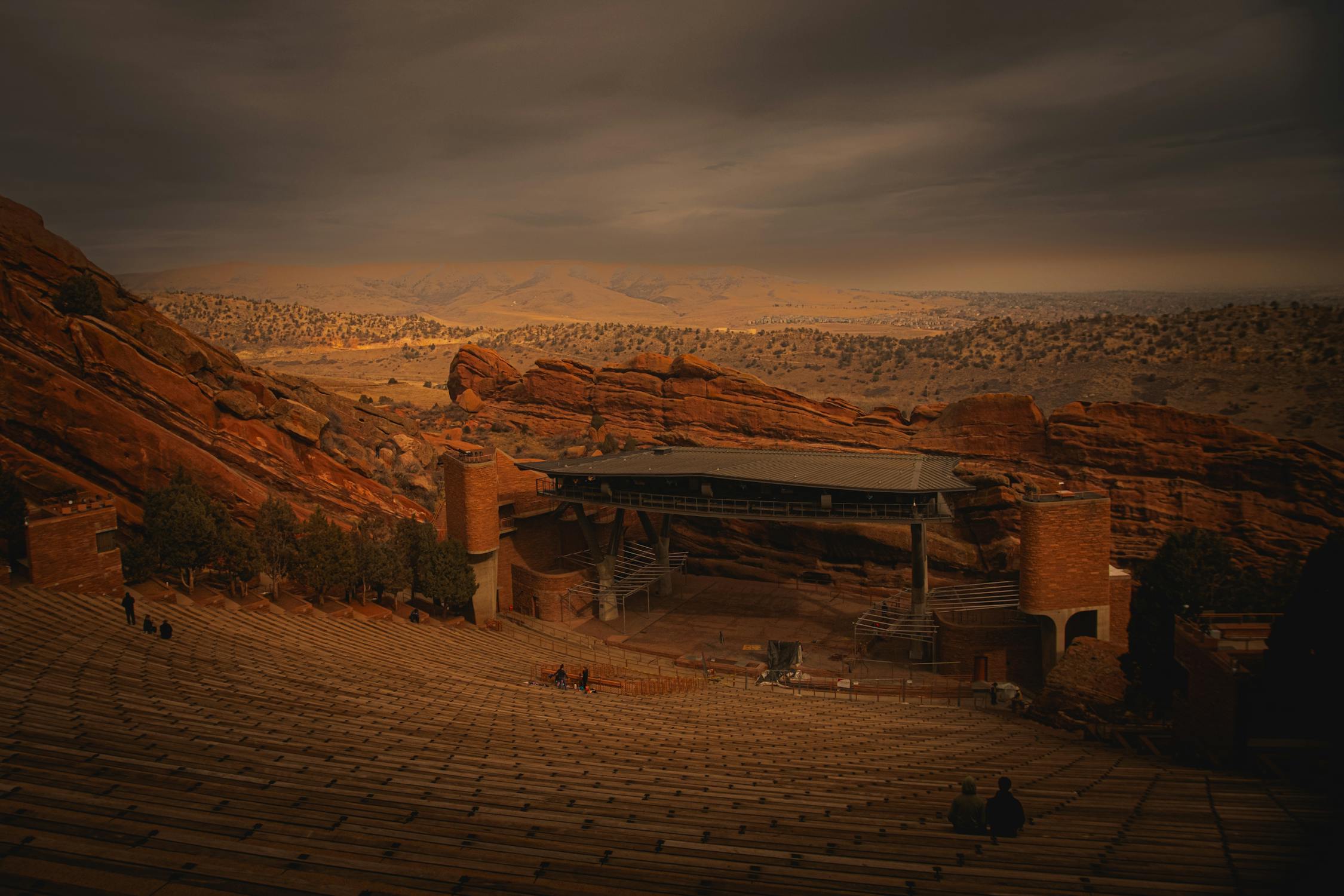Travel opens up the world, inviting us to explore diverse landscapes, encounter new cultures, and connect with the profound tapestry of human history. From vibrant cities brimming with life to tranquil landscapes offering solitude, it’s a chance to step outside the everyday and see the world differently. But what if travel could also fuel your deepest passions? For many, exploring the globe goes hand-in-hand with pursuing a cherished interest, perhaps a star hobby.
Imagine combining the thrill of discovering a new destination with the joy of engaging in what you love most, whether it’s capturing distant galaxies through a lens or simply contemplating the vastness of the cosmos. Getting there smoothly is key, and the evolving infrastructure at major hubs like Houston’s Bush Airport is making these journeys easier than ever, paving the way for unforgettable adventures where your star hobby can truly shine, connecting you to the universe from anywhere on Earth.
The Airport as Your Launchpad for Star Hobby Quests
The transformation happening at George Bush Intercontinental Airport (IAH) isn’t merely about constructing new buildings or modernizing existing ones; it’s fundamentally about creating a more efficient, comfortable, and seamless gateway to the world’s wonders. For the dedicated enthusiast of a star hobby, the journey begins long before reaching the destination. Imagine arriving for your meticulously planned trip, perhaps one centered around witnessing a rare celestial event, visiting a renowned observatory, or exploring ancient sites built with astronomical alignments. A smooth start is paramount.

The recent wave of significant upgrades at IAH directly addresses pain points that can hinder the start of any adventure, especially one involving sensitive equipment or requiring focus from the outset. The inauguration of the first phase of the new Terminal E Ticketing Lobby, coupled with enhancements like new curbside lanes and expanded, tech-savvy parking options using license plate recognition, dramatically eased congestion during peak travel periods like the recent Spring Break. This means less time navigating traffic and queues and more time mentally preparing for the exciting pursuit of your star hobby.
Inside the terminals, the focus on a ‘user-friendly, passenger-first’ experience is evident in renovations and new amenities. The modernized Terminal D now boasts improved seating with integrated power outlets – a small but significant detail for travelers needing to charge devices or power up planning tools before a long flight. The striking Terminal D-West expansion further elevates the international traveler’s experience with cutting-edge technology, comfortable gate areas, and thoughtfully curated art installations.
For those who might find the airport environment overstimulating, the addition of sensory rooms designed for travelers with sensitivities offers a quiet retreat, ensuring that travel is accessible and comfortable for everyone embarking on their unique journeys, perhaps even needing a moment of calm before reviewing tips on using a hobby telescope.
Beyond the structural and technological improvements, Houston Airports is investing in fundamental comforts, like a multi-million dollar restroom renovation project across multiple terminals, reflecting a commitment to cleanliness and modern facilities. Furthermore, the inclusion of spaces like a dedicated ablution room highlights an understanding of diverse passenger needs, ensuring travelers can observe important personal or religious practices before their flight. All these elements combine to reduce travel friction, allowing travelers to arrive at their destination more relaxed and ready to fully immerse themselves in their passion, whatever form their star hobby takes. This dedication to the passenger journey from arrival to departure sets the stage for a successful and enjoyable trip centered around exploring the cosmos.
Where the Skies Ignite Your Star Hobby
Once the airport journey is smooth and the flight touches down, the real adventure begins for the enthusiast of a star hobby. The destination is not merely a place on a map but a crucial component in the pursuit of cosmic exploration. While the dazzling lights of major cities unfortunately contribute to light pollution that obscures the night sky, remote areas around the globe offer unparalleled celestial views.
Think of the arid plains of the Atacama Desert in Chile, known for having some of the clearest, driest air on Earth – home to world-class observatories but also accessible spots for amateur astronomers. Consider the high altitudes of the Himalayas or the vast, sparsely populated outback of Australia. These places are more than just geographic locations; they are sanctuaries where the night sky reveals its full, breathtaking glory, a canvas painted with countless stars, nebulae, and galaxies invisible from urban environments.

Traveling to such remote spots connects you with nature in its purest, most expansive form. Away from the constant buzz of civilization, under a blanket of stars, there’s a profound sense of perspective and wonder. These environments provide the ideal conditions for deep observation, astrophotography, or simply contemplating the vastness of the universe. The quiet, the darkness, and the sheer number of visible stars can be a deeply moving experience, allowing for the deepest immersion in your star hobby pursuits and revealing why this passion captivates so many.
Cultural Constellations: History, Traditions, and Your Star Hobby
Beyond the pristine, dark skies, the history and culture of a place often hold fascinating and intricate links to astronomy. For millennia, civilizations across the world looked to the stars for guidance, not just for navigation across seas and lands, but for timekeeping, agriculture, religious rituals, and spiritual insight. Visiting sites steeped in astronomical history can provide a profound historical and cultural context for your star hobby, adding layers of meaning to your personal observations.

Imagine standing within the stone circles of Stonehenge at dawn during the summer solstice, feeling the echoes of ancient peoples who aligned these massive structures with celestial events. Or explore the Mayan ruins in Central America, where complex calendars and architectural alignments reveal a sophisticated understanding of planetary movements and stellar cycles. Traveling to regions like India, China, or the Middle East allows you to delve into rich traditions of astronomical scholarship that predate Western science, discovering ancient observatories and texts that charted the heavens with remarkable accuracy.
Learning about indigenous constellations, traditional sky stories, or local astronomical practices connects you with the human story of our relationship with the cosmos. It highlights how the night sky has always been a source of wonder, a subject of scientific inquiry, and an integral part of cultural identity across different civilizations. This kind of exploration bridges the gap between modern science, ancient history, and local identity, profoundly enriching your understanding of how humanity has always been connected to the night sky and elevating your star hobby beyond just observation to a deeper cultural appreciation.
Equipping Your Star Hobby Expedition
Embarking on an adventure tailored to your star hobby requires careful planning and the right equipment. Whether your passion involves casual stargazing with the naked eye, detailed observation with optics, or serious astrophotography, being prepared ensures a more rewarding experience.
Packing the right clothing is essential, as the best stargazing spots are often remote and can experience significant temperature drops at night, even in warmer climates. Layers are key. Navigation tools, whether traditional maps and compasses or modern GPS devices and star-charting apps, are vital, especially if you plan to venture into less-traveled areas to escape light pollution.
For those whose star hobby involves optical aids, securing your equipment is perhaps the most critical aspect of packing. Telescopes, cameras, and sensitive lenses need careful packing to survive the journey, both during flights and overland travel to remote sites. Researching airlines’ policies on carrying such equipment and investing in sturdy, padded cases are necessary steps. Whether it’s a small, portable amateur astronomy telescope or a more substantial piece of gear, ensuring its safe arrival is paramount for a successful trip focused on cosmic observation.
What to Eat in Fort Worth – A Culinary Deep Dive
Discover the Top Restaurants in Denver – A Culinary Journey
Discover Where to Visit in Las Vegas
Furthermore, research is vital in selecting your travel dates. The best time to visit a specific location for your star hobby depends on factors like the phase of the moon (a new moon offers the darkest skies), local weather patterns and seasons (clear skies are essential), and the timing of specific celestial events you might want to witness, such as meteor showers, eclipses, or the visibility of particular constellations or planets. Proper research and preparation transform a casual interest into a truly fulfilling expedition dedicated to the wonders of the night sky.
Tasting the Cosmos: Culinary Adventures for the Star Hobby Traveler
Travel is inherently a feast for the senses, and even the focused pursuit of a star hobby can be wonderfully enhanced by the local culinary landscape. Food is one of the most direct ways to connect with the culture and people of a place, and exploring local flavors can add an unexpected but delightful dimension to your astronomical journey.
Imagine settling down in a remote desert camp after a night of stargazing, enjoying a hearty, slow-cooked stew prepared over an open fire, its flavors echoing the landscape around you. Or perhaps, in a high-altitude village, sipping a warm, spiced drink traditional to the region while discussing the constellations you’ve just observed with local guides or fellow travelers.
In regions known for their clear skies, the local cuisine often reflects the ingredients available from the surrounding environment – hardy grains, unique desert plants, or meat from livestock adapted to the terrain. Exploring local markets, trying street food, or dining at small, family-run restaurants allows you to taste the authentic flavors of the destination. This culinary exploration provides not just sustenance, but a deeper understanding of the region’s history, economy, and way of life, all of which contribute to the rich tapestry of your travel experience alongside your star hobby.
Food is a profound connection to a place, and sharing a meal under a sky full of stars is an experience that nourishes both the body and the soul, creating lasting memories tied to both flavor and light.
Active Pursuits Under Starlit Skies
Combining physical activity with stargazing or astronomical exploration adds another dynamic layer to your travel. The pursuit of a star hobby often naturally leads to locations perfect for other outdoor activities.
Hiking to a remote hilltop or mountain peak offers an excellent opportunity to escape ground-level light pollution and gain an unobstructed panoramic view of the sky. Camping overnight in a national park renowned for its dark sky status allows for extended observation sessions and the chance to wake up to breathtaking natural landscapes. Even participating in local festivals or events that have historical or cultural ties to astronomy – perhaps involving parades, traditional dances, or storytelling under the stars – can be a wonderfully active and engaging way to deepen your connection to the place and its relationship with the cosmos.
These active pursuits make the star hobby experience richer and more memorable. They encourage you to engage with your surroundings beyond just looking up, embracing the journey, pushing personal boundaries, and perhaps discovering new aspects of your passion for the stars through the lens of physical activity and cultural immersion. Whether it’s a challenging trek to an observation point or a leisurely walk under moonlit skies, integrating activity enhances the overall sensory experience of your celestial adventure.
Ultimately, the synergy between travel and pursuing a passion like a star hobby is incredibly rewarding. From the improved efficiency and comfort of modern airports making global exploration more accessible, to the unique cultural, historical, culinary, and active experiences awaiting at your destination, every element contributes to an unforgettable journey. Travel allows you to transcend the limitations of your immediate surroundings and connect with the cosmos from vantage points that offer unparalleled clarity and beauty. So, next time you plan a trip, think about how you can integrate your passions. The world is vast, and the sky is limitless, waiting to be explored through the lens of your star hobby.

